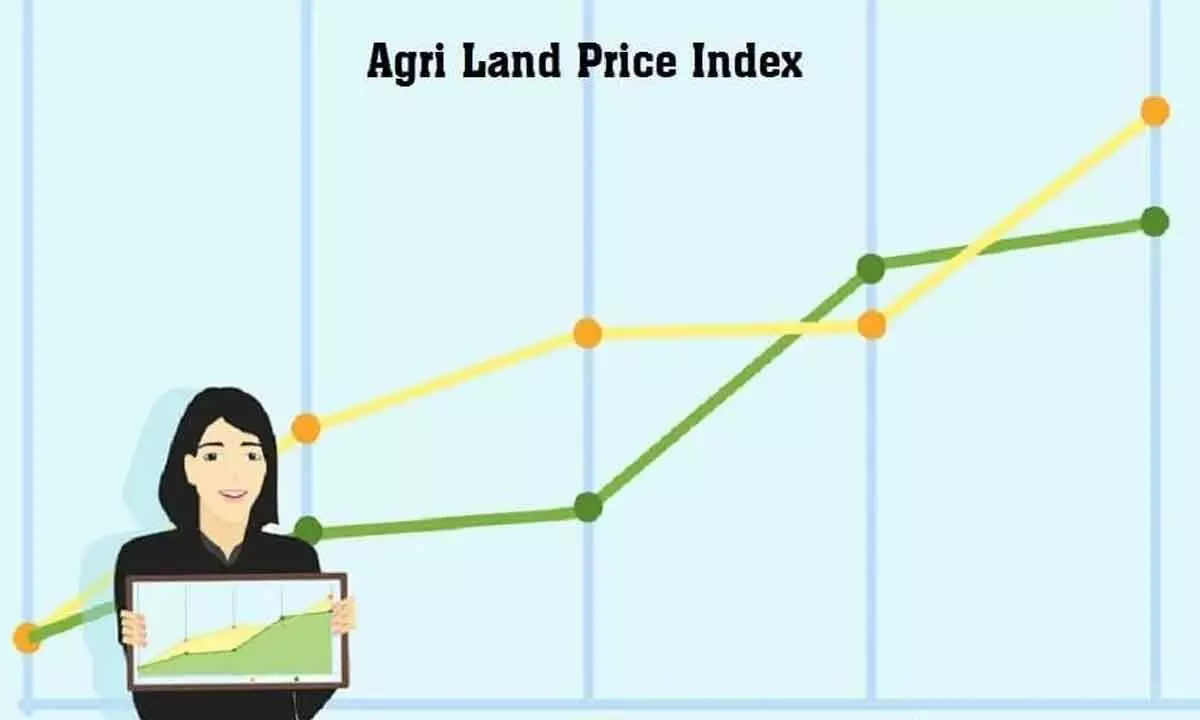Delhi leads the pack in speculative pricing bubble
IIM (A) study calls for regular monitoring of market dynamics to make informed decisions
image for illustrative purpose

In India, where 25% of the yield is destroyed by pests and insects, quaint regulations on pesticides need policy modernization. India’s agricultural sector reached 52 per cent irrigation access in 2022-23, up from 41 per cent in 2016, driven by initiatives like the Pradhan Mantri Krishi Sinchai Yojana and Accelerated Irrigation Benefit Programme
Agricultural land parcel being listed for sale in Delhi may be heading for speculative pricing bubble, says the December 2023 (latest update from September) index release of IIM Ahmedabad that is titled ‘IIMA-SFarmsIndia Agri Land Price Index’ (ISALPI).
In the third quarter of 2023, ISALPI appreciated by 18 per cent, whereas the Y-o-Y growth in ISALPI as recorded in September was 28 per cent.
The annualized growth until September stood at 11 per cent. Overall, ISALPI experienced an annualized growth of 14.3 per cent, since its inception.
In addition to price evolution, the report offers regional insights into land price trends. It highlights the need for regular monitoring of the market dynamics to make informed decisions. The priciest farmland listings (multiple =7X) in Delhi are also characterized by the shortest average distance from both the nearest airport (15 km) and urban centre (7 km). This proximity likely reflects the high demand for land close to urban centres and transportation hubs.
For instance, the average price multiples in Gujarat, Maharashtra, Uttar Pradesh and Bihar, which stand at 1X. In contrast, states like Odisha and Rajasthan, with lower agriland price multiple, have relatively longer average distances to both airports and towns, the study reveals.
The high agriland prices in Delhi, coupled with its small average acreage (6 acres), reinforce the notion that small, strategically located parcels close to urban centres command a premium. Kerala and Odisha, with larger average acreage, may attract investors seeking more extensive agricultural holdings, potentially for plantation or large-scale farming.
Talking to Bizz Buzz, creator of the index Dr. Prashant Das, Associate Professor of Finance & Real Estate at IIM (A) says, “Our index is based on data from land parcels that were listed for sale. As other parcels are not being valued for the market, there is some sample-selection bias in our price index.”
For example, when we see a seven-fold cross-sectional price multiple in Delhi compared to, say, Gujarat for parcels of otherwise similar quality, it may simply reflect a speculative pricing bubble in the parcels listed for sale in Delhi, he said. Farm owners are attempting to offload their parcels in anticipation of urbanization, or improved transport infrastructure. With support from our data partner SFarmsIndia, we hope more data to be available going forward that will reduce the biases in ISALPI, he added.
Agricultural land prices in the national capital region (and surrounding areas), in general, are high except in Ghaziabad. For example, Gurugram (Haryana) has the highest multiple of 5x followed by Rewari (Haryana: 3.75X), and Gautam Budh Nagar (UP: 2.75X).
In India, where 25% of the yield is destroyed by pests and insects, quaint regulations on pesticides need policy modernization. India’s agricultural sector reached 52 per cent irrigation access in 2022-23, up from 41 per cent in 2016, driven by initiatives like the Pradhan Mantri Krishi Sinchai Yojana and Accelerated Irrigation Benefit Programme, which helped mitigate the impact of erratic monsoons on dryland agricultural zones, improving water-use efficiency.
The Uttar Pradesh government has recently approved Rs. 57 crore towards improving soil health of barren and rugged lands. The use of technology in the form of agronomic treatments, genetic engineering, crop nutrition and protection can help increase productivity and sustainability in agriculture. As land is the most critical input to agriculture, fair implementation of policy or entrepreneurial interventions requires a robust understanding of movement in agricultural land prices.
While a few states have no restrictions, some have in the form of ceiling limits, control on change in land use or require approvals from the official authority, says the report.
Analysis of agricultural land listings offers some regional insights into the pricing and associated characteristics that influence the value of the land.
Northern states like Delhi, Haryana and Punjab, generally have higher pricing compared to states in the southern and eastern regions like Tamil Nadu, Odisha, and West Bengal.

